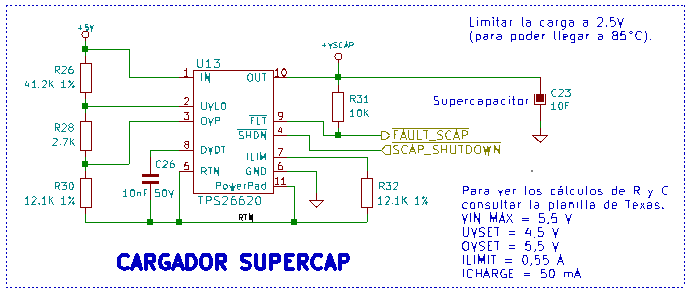Other Parts Discussed in Thread: TPS25947
Hi all.
I'm working with a design based in the tps26620 for a backup source with a supercapacitor.
The design was done through the design calculator tool and the schematic and the settings values are:

The circuit doesn't work, the efuse latches off intermediately its enabled. According to the datasheet, this behavior is due to an overload or a thermal shutdown.
In the calculation tool I could see a possible error:

The Cout value it is set in 10uF when its should be 10F, when I try to change the units it's not able so I try with the equivalent value (10000000). Under the original conditions, the system has no problem with power dissipation in the startup time.

But when I change the Cout value, the system has problems with power dissipation. After some changes in the calculator I got a stable system with the following values: Cout 2000000uF and Cdvdt 100uF. (The other parameters are the same.)
When I probe the circuit with the news values, the efuse doesn't latches off, but the FLT pin in the efuse is in low state for a long time. This time (tdvdt) is too long for the efuse to get the rated voltage, but it is enough to charge the supercapacitor, then I have to turn off the efuse to prevent an overvoltage in the supercapacitor, as a consequence the efuse will never get the rated voltage and the FLT pin will always be in low state.
On the other hand, the inrush current is about 10A in the original design and about 1A in the final design.
Then I have the following questions:
Is it correct that I changed the value of Cout from 10uF to 10000000uF (real for my design-10F supercap) in the calculator tool? or the device (tps26620) doesn't let manage a big capacitance?
With different changes in the calculator tool I could manage a maximum load capacitance of 2F (without thermal shutdown) and the maximum Cdvdt is always 100uF (for values greater than 2F), is this correct? why?
Because of the limits of current of the tps26620 (0.8A), i don't think that it's the best device for this control, is it?
Can I improve the design with the TPS26620 to handle 10F load capacitance, or is it necessary to change the EFUSE model?
Thank you for your attention.
Best regards.


